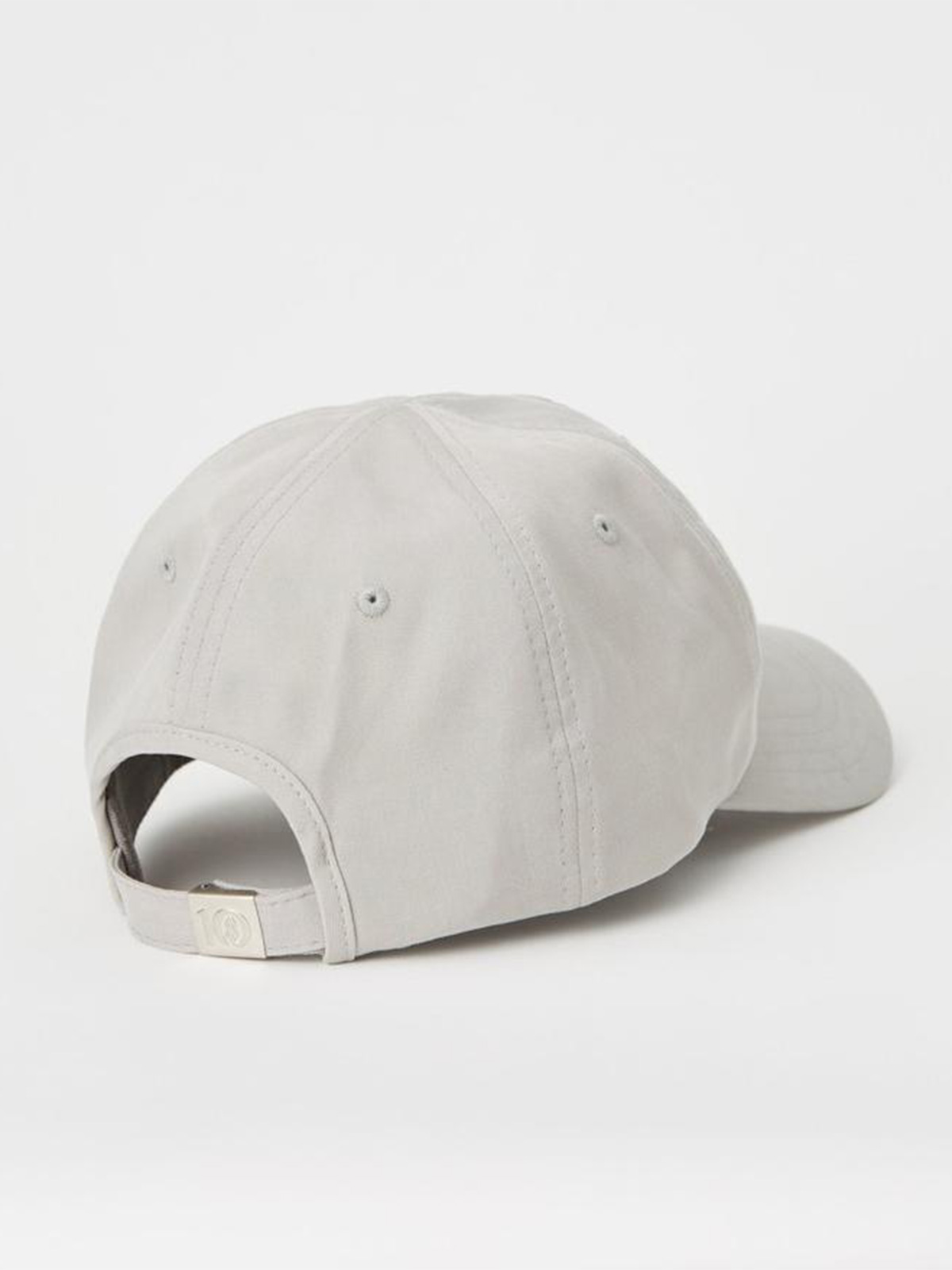In her new book The Sustainable Wardrobe, journalist Sophie Benson addresses sustainable fashion’s elephant in the room: overproduction and a late capitalistic system of overpromoting the clothes people overconsume. What we need, she writes, is an entirely new system. But, of course, the big brands would rather tell us about recycled polyester.
A consumerism reality check
Our grandparents are often held up as sustainability role models. There are countless articles that explain why we should shop like them, or how and what we can learn from them. It’s certainly true that they bought less, mended more, and kept things for longer. But why?
Were the generations that went before us just morally better? Are younger generations hell bent on trashing the planet through consumerism? Not quite.
World War II, rationing, and post-war austerity were catalysts for a “make do and mend” approach and a more frugal attitude to everything from food to clothes, while the explosion of a globalised fashion industry and the rise of cheap fast fashion have significantly altered perceptions of value for subsequent generations.
We’ve been herded towards this reality over the course of a century by people seeking maximum profits, and with each generation came more tricks and more pressure to shop till we drop.
From need to desire
The dawn of mass production in America spawned a necessity for consumers to buy all the stuff that was now being churned out at great volume. It was a new way of doing things and corporations were nervous that consumers would reach a point where they felt they had a sufficient number of possessions and would simply stop buying things.
That would be no good at all. After all, what’s the good in making products only for no one to buy them?
There’s no profit if there’s no customer. Investment banker of the era Paul Mazur had a plan. “We must shift America from a needs to a desires culture. People must be trained to desire, to want new things, even before the old have been entirely consumed. We must shape a new mentality in America. Man’s desire must overshadow his needs,” he wrote in the Harvard Business Review in 1927.
Why buy a coat to keep you warm if you already have one that does the job? But how could you possibly resist a coat that will make you feel and appear more elegant, professional, or attractive?
Even if you’ve never read that quote before, the overarching concept is likely familiar. Most of us continue to buy new clothes even when we have a wardrobe full of them at home. Mazur and his peers at the time reshaped how products were sold. Advertisements became less descriptive and more emotional. It was no longer about what products could do but how they could make you feel. Why buy a coat to keep you warm if you already have one that does the job? But how could you possibly resist a coat that will make you feel and appear more elegant, professional, or attractive?
Mrs Stillman was a celebrity aviator in the 1920s who could be considered one of the first fashion influencers, addressing consumers at department stores and via promotional films. “I’m sure all of you are interesting,” she said to an audience at the time, “and have wonderful things about you, but looking at you on the street, you all look so much the same … Try and express yourselves better in your dress.”
While expressing status or character through clothing was once the preserve of the wealthy, now women who visited department stores were encouraged to see fashion as an aspirational tool. If only they bought this dress or that fur stole, they could be just like the celebrities they desired to emulate.
Using up, not wearing out
Of course, the act of purchasing new clothes had to be sustained. If a woman bought one gown and then was completely satisfied, it was hardly a money-spinning business model.
So, in 1932, two advertising executives, Egmont Arens and Roy Sheldon, built upon Mazur’s concept in a book entitled Consumer Engineering: A New Technique for Prosperity. “Goods fall into two classes: those that we use, such as motor cars and safety razors, and those that we use up, such as toothpaste or soda biscuits. Consumer engineering must see to it that we use up the kind of goods we now merely use,” they wrote.
“Why would you want last year’s handbag when this year’s handbag is so much more attractive? Does there seem to be a sad waste in this process? Not at all. Wearing things out does not produce prosperity. Buying things does,” they continued.
We’re now very aware that there is indeed a very sad waste in this process. There are likely millions upon millions of “last year’s handbags” in landfill, but unburdened by the visual proof that we now have, advertising executives forged ahead, encouraging a cycle of consumption and waste in the name of prosperity.
A century of marketing
Early marketing, advertising, and PR pioneers blazed a trail for emotional advertising and influencing consumer desires. Every time you see an advert for some leggings that will make you feel empowered or a jacket that will bring out the adventurer in you, you have them to thank (or, more likely, curse).
And the methods used to keep us shopping have only got more sophisticated ever since. Tugging at our emotions and vanities now feels almost quaint.
Every time you see an advert for some leggings that will make you feel empowered, you have the marketers to thank.
Retailers use heat maps to see exactly what shoppers are drawn to in stores; cameras can count how many people turn to look at a mannequin or display; different consumers are shown different versions of the same website so brands know which images or words encourage more clicks and purchases; smartphones serve us scarily specific targeted ads; influencers act like they’re our friends in order to encourage us to shop; consumer psychologists dig deep into our psyches and then use that knowledge to sell things to us.
As consumers, we are being nudged, choreographed, and manipulated almost every second of the day in ways we could scarcely imagine. With such a deluge of expertise being used against us, it’s no wonder we can’t stop thinking about the next addition to our wardrobes.
Fashion on fast forward
As all these clever methods were developed, brands began to speed up the frequency at which they released new products. It began on the high street. One big fashion boss realised customers would come into his shops, look around, and then go home to think about whether they wanted to buy what they’d seen, safe in the knowledge it would still be there in three or four weeks’ time. This wasn’t good enough. He wanted people to buy his products there and then, so he hatched a plan: add new products to the store every two weeks to keep people coming back to see what’s new and—crucially—remove old stock to drive a “get it or regret it” mindset among his customers.
It worked, and so the practice spread. Seasons were replaced by so-called micro seasons in stores, meaning that there could be tens or even hundreds of new trends and collections released every single year.
As consumers, we are being nudged, choreographed, and manipulated almost every second of the day in ways we could scarcely imagine.
The consumer climate this business model induced proved to be fertile ground for online retailers. Initially, they very much echoed brick and mortar stores in terms of volume and new offerings, just operating online instead. But soon, they realised the lack of stores and the need to uniformly fill rails gave them more flexibility. Brands could copy a look a celebrity had worn on the front of a glossy magazine, have a few hundred units of it produced in just a couple of weeks, test it to see if it sold, and order more if it did. It was a completely new, reactive way to operate and it did the trick. Once consumers realised they didn’t have to wait months to be able to participate in a new trend, they were hooked. People could emulate their favourite celebrity (and later, influencer) in a matter of days.
Seeing the value in lightning-fast production, fast fashion e-commerce retailers started to add new products every day to keep people coming back for more. Brands reduced lead times (the time it takes to go from initial design to a product being for sale) from weeks to just days, and as each new name sought to be the biggest and best, the number of products being added every day grew, with some adding thousands daily. Couple all this with the fact that buying new clothes triggers our ancient, internal reward system and makes us feel good, and we begin to see exactly why we’ve come to shop in the way we do. Without the space to pause, reflect, and question, we find ourselves on a non-stop conveyor belt of consumption to the detriment of our wellbeing and the planet. We need a better system.



















